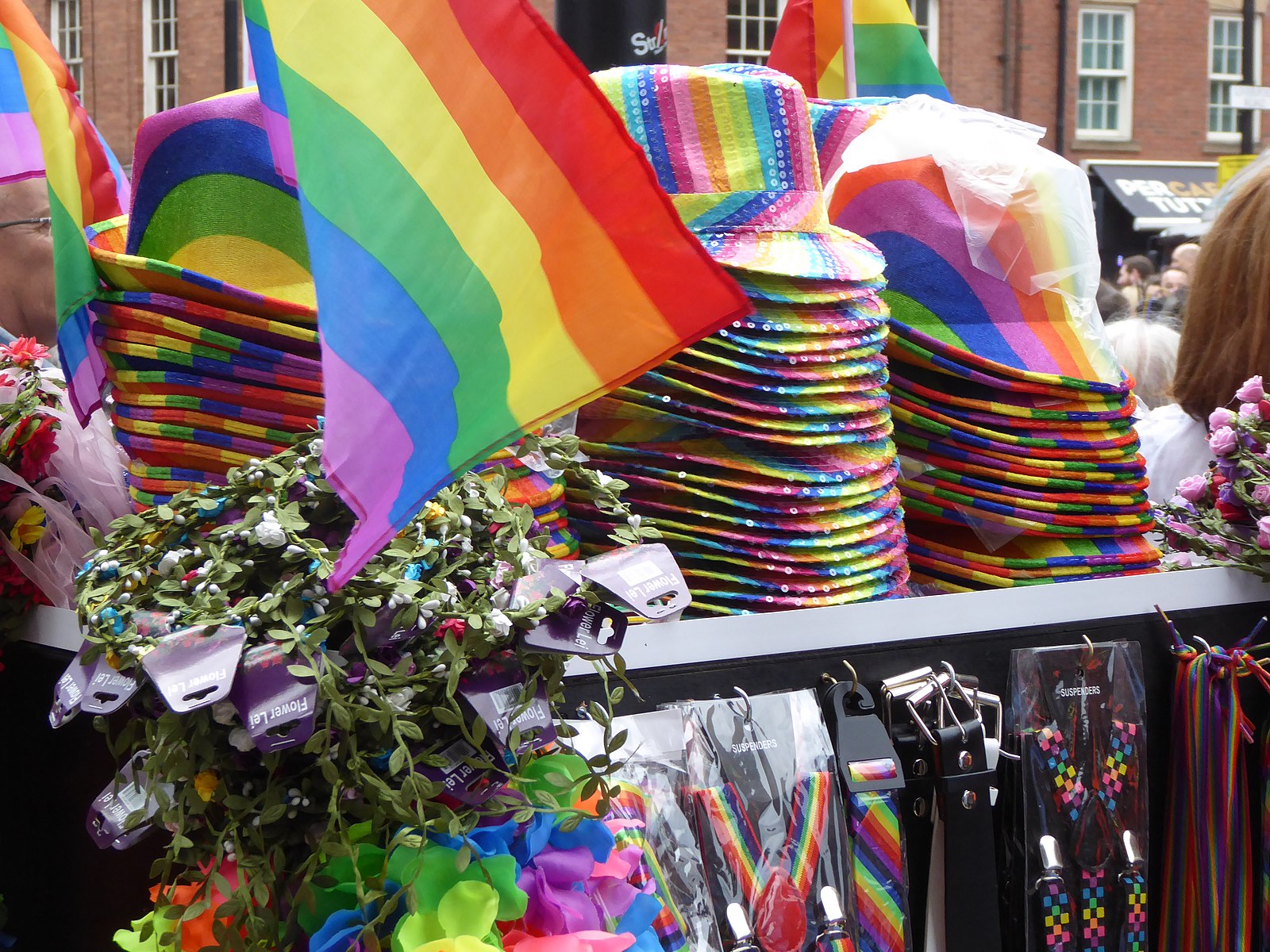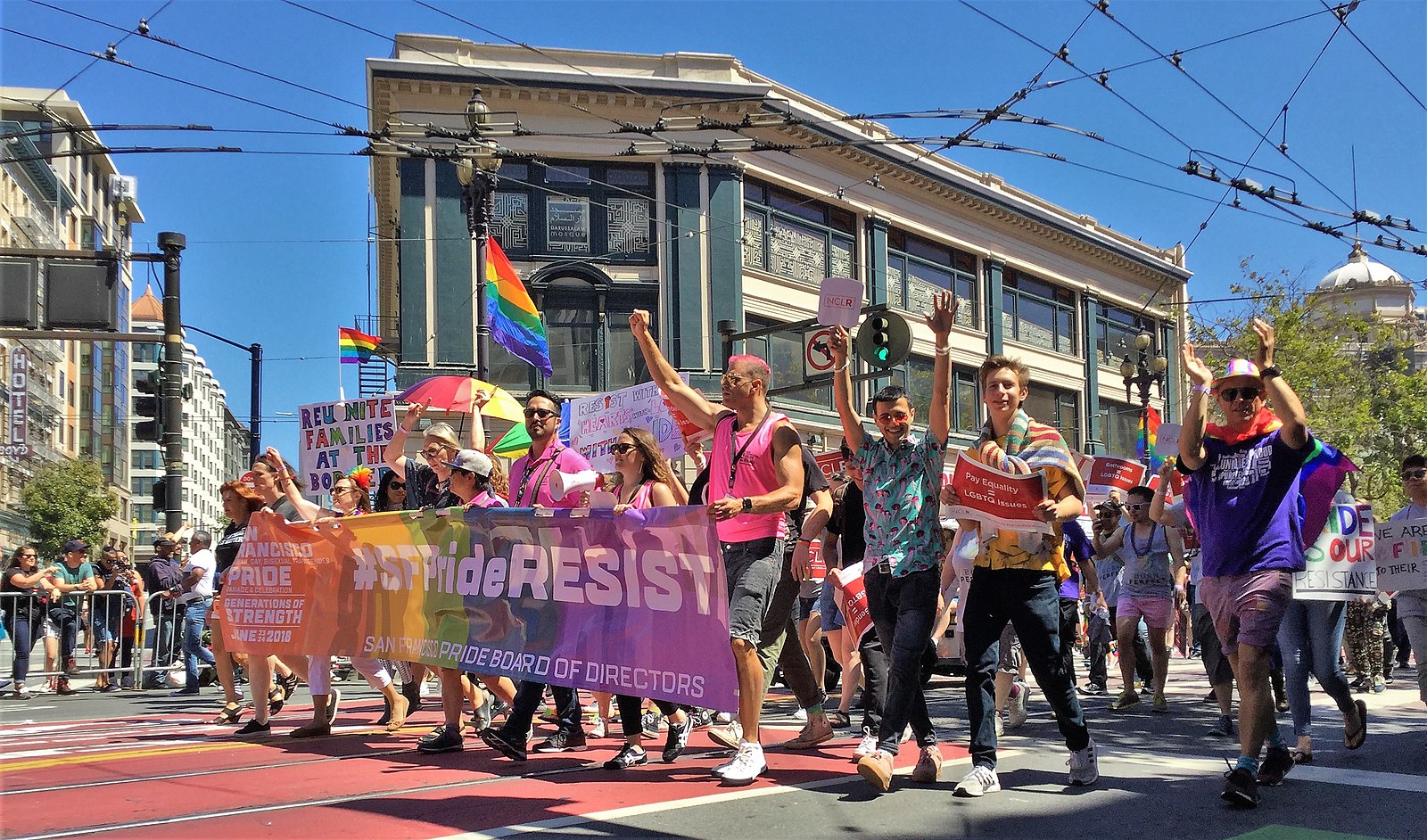Its summer 2024 (yes really..even if we’re yet to see the sun) and the LGBTQIA+ community and their allies are gearing up ready to go out and celebrate their identities at their closest pride parade. Pride parades have been around for over forty years. It’s a chance to meet up with others who share similar life experiences, whilst celebrating history together. Yet with each year as pride gets bigger, and the parades get flashier… Perhaps it is time to think about the environmental impact these celebrations are having.
What is Pride Month And How Did it Begin?
Pride Month happens every June, Its’s a time for queer individuals to come together and celebrate their differences. And for anyone who is an ally, a time to show their support to the LGBTQIA+ community.
Although typically thought of as a month of celebration, Pride originally began as a protest. Around 60 years ago, being a part of the community – and being public with your sexuality – was illegal. Many bars, clubs, and other safe havens were forcibly shut down by the police. Pushing the individuals that used them into risky situations. While the fight for Gay Rights had been started, it was not until the Stonewall Riots on the 28th of June in 1969 did a real change begin to happen.
The riots began at a Manhattan bar; Stonewall Inn. Stonewall was one of these few havens where the cities queer community could come together and feel safe. While raids were common, on this particular night the Stonewall Inn customers and the community decided to challenge the authorities. The fight back carried on through the following nights and was led by Marsha P Johnson. You can read more about Marsha and the others involved in the Stonewall Inn rising in ‘The transgender pioneers of our time’.
So How Do We Celebrate It?
Now, over 39 cities across the world join in to remember the community that fought for our rights. Pride events mostly happen in the summer months following the official pride month of June. However some countries have started to make pride a summer long celebration! Rather then try and squeeze it all into one month. Cities in the UK like Birmingham and Manchester are also known to continue the festivities right through to September.
The pride events themselves are days/weekends filled with endless celebration. Usually in the form of parades followed by street parties. Consisting of live music, cabaret, and community out reach stalls including emergency services. Fire brigades, Police and even local Mayors attend, visibly showing unity with the LGBTQIA+ community. Essentially pride is a huge party that everyone is invited to!
 Rhododendrites, CC BY-SA 4.0
Rhododendrites, CC BY-SA 4.0 Product Of The Pink Pound
Pride events have gotten so big that they have started to attract attention from bigger brands. They see it as the perfect opportunity to offer their support… and also get lots of promo in return. It’s not a hidden fact that lots of fashion brands, home brands, supermarkets and other miscellaneous stores use this month to produce a lot of pride products for the community. All scrambling to cash in on the ‘pink pound’. In recent years we have even seen huge corporations such as Barclays bank and Virgin become sponsors for specific cities prides. But amidst all this support, there is the question whether this is the sustainable way to help the LGBTQIA+ community?
Rainbow Washout
Rainbow washing is a term that is used when discussing brands that create pride merch or themed items. But do not actually actively support the customers they are targeting. It’s a similar line of thought with green washing – when a company puts out a new line of ‘sustainable’ clothes. Usually, in a bid to redirect attention from their main source of income and how un-environmentally friendly it is. Perhaps the most well known dive into this problem is the article and campaign Who Made My Pride Merch. The campaign began when concerns around big companies such as Primark and H&M were making mass produced pride items in countries where it is still illegal to be gay.
This calls attention to not only how superficial most of the brands support is for the LGBTQIA+ community. But also how pride has started to feed into the unsustainable consumerism of capitalism. Every late spring, we see hundreds of stores stock up with products that have a limited shelf life. Items that are generally made unsustainably and even worse unrecyclable. This is also not considering the fact that Pride is a physical parade which involves thousands of people flocking together and celebrating. The number of plastic cups, flags and other items that are thrown away carelessly during the events is unsustainable. This needs to be addressed, sooner rather than later.
 Ardfern, CC BY-SA 4.0
Ardfern, CC BY-SA 4.0 The Queer Community and Environmentalism
Of course there are many other annual events that also cause mass production of products that will end up in the landfill after a very short lifetime. However, with Pride Parades it would be hopeful to start thinking about the more sustainable ways we celebrate. Queerness and Environmentalism intersect more than people realise. While Global Warming is affecting everyone, more marginalised communities are beginning to experience the worst effects first.
Queer people are more likely than other individuals to be pushed to the fringes of society, through homelessness or in general poor housing. We also, as a community, have and will always rely on geography to shape the way we communicate and come together. So with the sea levels rising and global temperatures reaching new extremes. More people are going to be forced out of their local towns and homes, isolating them even further. With the dire consequences of global warming we need to be nit-picking our actions a bit more. We need to be conscious and challenging brands or sponsors who are not living up to the green standards, even though they may appear to be living up to the rainbow ones!
 Samuel Wantman, CC BY-SA 4.0
Samuel Wantman, CC BY-SA 4.0 A Queerer and Greener Future
What is good though, is that a lot of queer run organisations are realising this connection between being queer and being an activist for the environment. This has consequently meant that a lot of new projects have begun to intersect their values and demands. This is starting to show up through Pride parades as well. Organisations like Greener Pride by OUT for Sustainability are focusing on the small ways the local community can make a difference to their own cities prides. And bigger companies like Green peace are in the process of suggesting that major pride cities like New York, Chicago and Manchester try and go plastic free in order to help out the environment.
One example where a small change can make a big difference is with Birmingham pride. They’re using different tactics to reduce plastic pollution. Instead of offering single use plastic cups, they offer reusable ones for a refundable charge. By paying for your cup and only getting your money back if you return it, pride goers are actively encouraged not to strew the streets with plastic waste. Helping to protect the cities environment and reduce waste. By focusing on ways we can reduce plastic and consumerist activities during pride, we can also take a step forward in making sure our future is sustainable.
Planet Pride
Environmentalism doesn’t always mean making things greener. By donating and helping out in your local queer communities you can help build safe spaces for young individuals to come together and be themselves. Helping out the local community and our future generations means that you are also effectively helping to contribute to a more sustainable future. Pride is a month of celebration and for remembering our history. So lets continue to work hard to make the LGBTQIA+ community and it’s events more sustainable. So that we and future generations can continue to take pride in not only ourselves but our planet.
